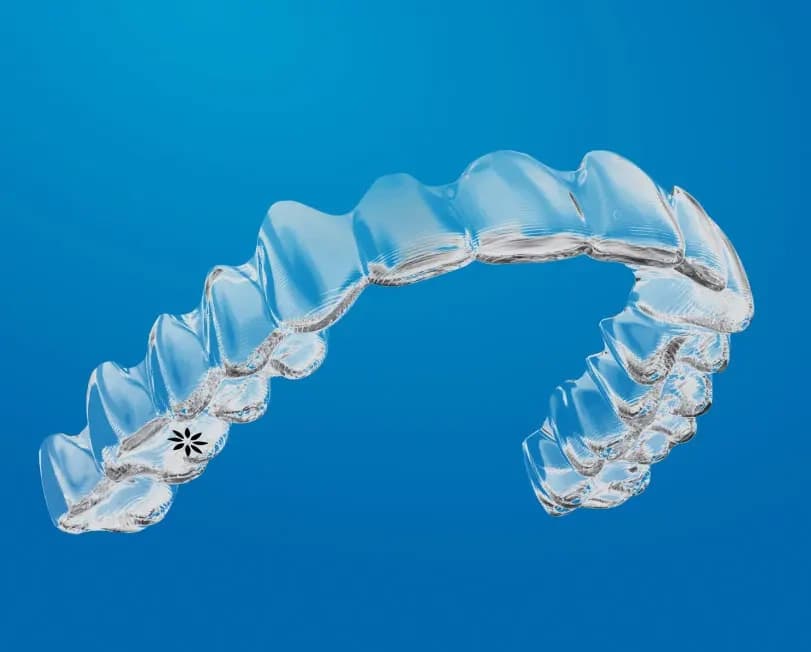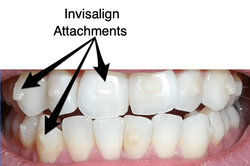The Ultimate Comparison: Invisalign vs. Traditional Braces for Grownups
The Ultimate Comparison: Invisalign vs. Traditional Braces for Grownups
Blog Article
Invisalign vs. Standard Braces: Which Option Is Right for You?
When considering orthodontic therapy, the option between Invisalign and conventional dental braces offers several important elements that merit mindful analysis. Invisalign uses a discreet choice with detachable aligners, while traditional dental braces offer a more visible yet effective solution for serious imbalance.
Overview of Therapy Choices
On the other hand, traditional dental braces are composed of metal brackets and cables that are bound to the teeth. This approach uses continuous stress gradually to achieve placement. While efficient for complex orthodontic problems, conventional braces require routine sees for modifications and can posture difficulties in maintaining dental hygiene due to the problem of cleaning up around cables and brackets.
Both options have their advantages, and the option typically rests on certain oral conditions, way of living preferences, and person conformity. Inevitably, seeking advice from an orthodontic expert is critical for establishing one of the most appropriate treatment strategy customized to individual requirements. Comprehending the nuances of each option can substantially influence the overall success of orthodontic therapy.
Aesthetic Considerations
A significant variable affecting the option between Invisalign and typical braces is the visual appeal each therapy uses. Invisalign aligners are crafted from clear plastic, making them virtually unseen when used.
On the other hand, standard braces consist of metal brackets and wires, which can be more recognizable. While advancements in orthodontic technology have actually caused the development of smaller sized braces and colored elastics, traditional braces still preserve a more obvious profile. For some individuals, the exposure of dental braces may prevent them from seeking required therapy.
Eventually, the option between Invisalign and conventional dental braces might depend upon individual preferences relating to appearances. Patients who prioritize discernment usually favor Invisalign, while those who are much less worried regarding presence might go with standard braces. Understanding the aesthetic ramifications of each alternative is critical for making an educated decision that aligns with one's way of life and choices.
Comfort and Convenience

In terms of comfort, Invisalign aligners are removable, enabling people to enjoy their favored foods without constraint and maintain ideal dental hygiene. Cleaning and flossing are streamlined, as the aligners can be gotten throughout these routines, whereas conventional braces require careful navigating around cords and braces.
In contrast, traditional braces require routine adjustments, making them much less hassle-free for those with hectic routines. On the whole, the convenience and convenience of Invisalign make it an enticing selection for several people seeking orthodontic treatment.
Therapy Duration and Performance
While both Invisalign and typical braces are effective in fixing oral imbalances, the period of treatment can vary substantially in between both alternatives. Typically, Invisalign therapy can take anywhere from 12 to 18 months, depending on the intricacy of the case. The clear aligners function by slowly changing teeth into their preferred placements, and normal follow-ups with an orthodontist assistance make sure progress continues to be on track.
On the other hand, standard braces usually call for a longer dedication, typically ranging from 18 months to 3 years. This is because of their set nature and using braces and wires, which can be much more reliable for extreme misalignments and complicated situations (Invisalign). The treatment effectiveness of conventional braces is well-documented, as they permit accurate changes and higher control over tooth activity
Inevitably, the option between Invisalign and traditional dental braces might rest on both the expected treatment duration and the details dental concerns available. Consulting with an orthodontist is crucial, as they can supply tailored suggestions based on specific needs, guaranteeing the chosen technique lines up with desired durations and results.
Cost Comparison and Insurance Choices
Expense plays a significant role in the decision-making process for people taking into consideration orthodontic therapy, whether choosing Invisalign or typical dental braces. On standard, the cost of Invisalign ranges from $3,000 to $8,000, while standard dental braces usually cost in between $2,000 and $6,000. Factors affecting these prices include the intricacy of the case, the period of treatment, and geographical wikipedia reference place.
Insurance policy coverage can considerably influence out-of-pocket costs. Lots of dental insurance strategies provide partial coverage for orthodontic treatments, however the specifics can vary extensively. It is crucial for individuals to examine their insurance coverage policies to figure out the extent of coverage for either alternative. Generally, conventional braces might be extra frequently page covered by insurance policy strategies contrasted to Invisalign, which some insurance firms categorize as a cosmetic treatment.
Furthermore, several orthodontic methods provide flexible layaway plan, making both treatment choices extra accessible. Individuals must ask about prospective funding choices and discounts for ahead of time payments. Reviewing the complete cost, including insurance policy benefits and settlement plans, is crucial for making an educated choice that straightens with both aesthetic choices and budget factors to consider.

Final Thought
In summary, the option between Invisalign and typical braces rests on multiple factors, consisting of visual preferences, comfort, treatment period, and price. Invisalign offers a very discreet, removable option that assists in dental health and dietary adaptability, while typical dental braces might be better for intricate oral concerns and usually come with a reduced rate point. Ultimately, examination with an orthodontist is necessary to evaluate private conditions and determine one of the most proper therapy choice for achieving optimal dental placement.
When considering orthodontic therapy, the option between Invisalign and typical braces provides numerous vital aspects that warrant cautious examination.Contrasting Invisalign and conventional dental helpful resources braces exposes distinct therapy options for orthodontic improvement.While both Invisalign and typical braces are effective in remedying dental imbalances, the period of treatment can differ significantly between the two alternatives.Expense plays a considerable duty in the decision-making procedure for individuals thinking about orthodontic treatment, whether choosing for Invisalign or conventional dental braces.In recap, the option between Invisalign and conventional braces hinges on multiple factors, including aesthetic choices, convenience, treatment period, and price.
Report this page